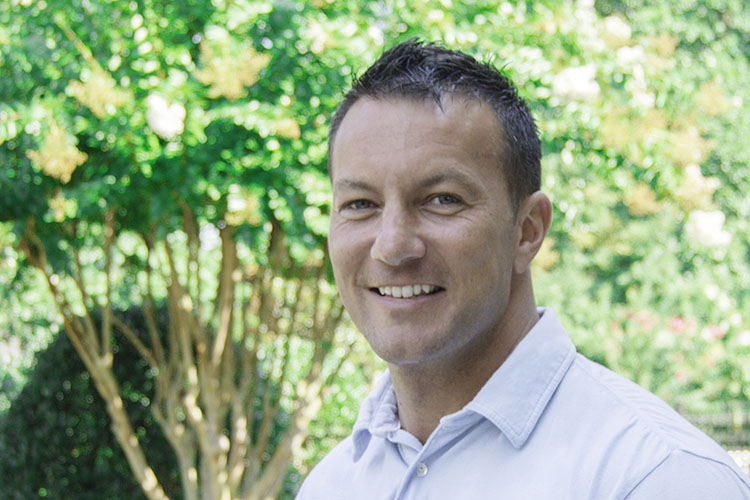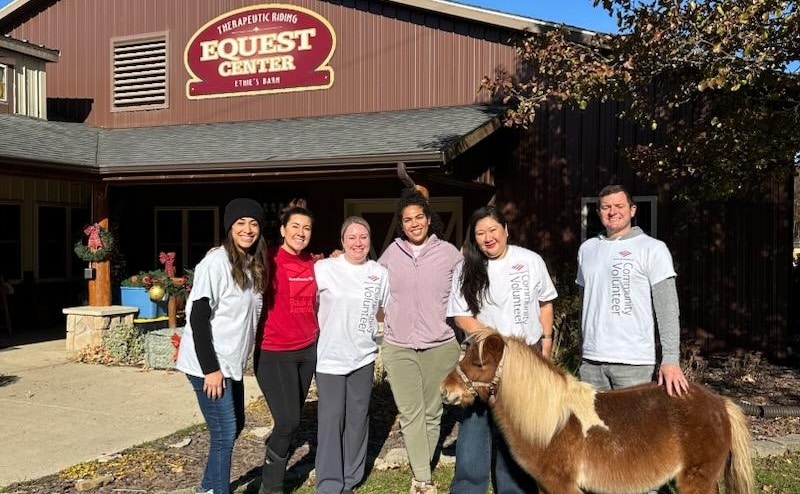RapidChat: Jason Russell
After the Sandy Hook Elementary School shooting in 2012, Jason Russell made the decision to pivot his career. With a daughter in elementary school and two other children in preschool, Jason leveraged his previous experience as a U.S. Secret Service agent to create Secure Education Consultants – School and Childcare Security Experts.

After the Sandy Hook Elementary School shooting in 2012, Jason Russell made the decision to pivot his career. With a daughter in elementary school and two other children in preschool, Jason leveraged his previous experience as a U.S. Secret Service agent to create Secure Education Consultants – School and Childcare Security Experts.
Rapid Growth: How did you first land your position as a Secret Service Agent?
Jason Russell: When I was working as a police officer in Lansing, I went back to graduate school at MSU. This was at the time MSU had a bunch of riots and I was responding to these demonstrations. After I finished my degree, I applied a bunch of places —mostly federal, but some with the Secret Service and CIA. I actually had a job offer from the CIA, but I chose the Secret Service because I liked the protection element of it.
RG: What was the application and training process like for the Secret Service?
JR: The process for the Secret Service was similar to any other government process. You go through a couple of interviews, you do a polygraph test—which mine lasted an entire day; I must have passed—then you go through a pretty extensive background check. The percentage of people that make it from the start to the finish is very small. Once you get hired, you spend about seven months in training. The training is broken up into two phases: one in Georgia and one just outside of Washington D.C. That’s where you learn all your protection-related tactics. You practice driving the big limousine. You practice shooting. All the elements that go into protecting the president. Then when you are done, you graduate and are sent to a field office. I happened to be sent to Detroit where I was an agent in the counterfeit squat.
RG: How did the weight of this role impact you personally?
JR: You can tell you are involved in something very big. There are a lot of moving parts and it’s so fast paced. It definitely requires a ton of man power. Not only on the staff side, but the protection side. You can definitely feel that you are a part of history, but sometimes at the time you don’t realize it.
RG: What brought upon the creation of Secure Education Consultants?
JR: It started after the shooting at Sandy Hook elementary. At the time I had a daughter in elementary school and two other children in preschool. My wife also owns four private child care facilities and I knew none of her teachers would know how to respond to an emergency such as that. So that’s where that came from: my desire to protect my own children and using my experience to help teachers.
RG: What are some of the most common mistakes you see that organizations have within their security systems and procedures?
JR: What is most common is that they tend to focus on physical security measures. They count on cameras, locks, and all these other physical things to help them. But security and safety actually need to happen in a much more layered approach. The second biggest mistake is they don’t take the time to train their people if an incident should actually happen. If you think about it, most places have their security procedures written out in a manual. But when are you ever going to grab that during an emergency?
RG: What are some security measures that businesses can easily improve upon?
JR: Depends on the organization. You first need to figure out what your risks are and where your risks come from. Then you need to weave your security in based on your risks. I think the biggest issue is that businesses don’t know what their risks are. They don’t know what security is beneficial to them.
RG: What about with schools?

JR: Most school districts treat every single age group the same. When in reality, the risks in a high school are far higher than in a middle school. One of the things I think schools need to do is to instill preventative procedures. We use the Threat Assessment at SEC, which looks for the warning signs. Because they are real. Then it is on them to take some preventative measures to prevent any event from occurring. All of these shooters walk a path. They don’t just wake up and decide they are going to shoot up their school.
RG: What does the Threat Assessment entail?
JR: Basically, we know from research there are behaviors of concern— “warning behaviors”—that exist. What threat assessment is, is that you are trained on what these warning signs are. It also provides you tools to investigate these issues and see if there is a legit concern. You take warning signs and aggregate them. Essentially puzzle pieces. This person has talked about suicide, stalking people, he/she has weapons, they are showing sympathy for a previous shooter, and so on. Threat assessment helps you identify, investigate and prevent, so the person doesn’t move farther down that path. With that being said, it’s not a perfect science. With the recent shooting in Florida, there were multiple people who were saying something. The FBI got the information on these signs, but unfortunately didn’t follow up on them.
RG: As a recurring topic of conversation, why do you think we haven’t seen more preventative actions being taken?
JR: The pendulum swings between privacy and security based on what our latest concern is. In this moment we’re concerned about shootings, so we’re seeing a decrease in privacy. But in about a month or so, you’ll see the pendulum swing back to concerns with privacy. I think we can prevent this from not having such dramatic overcorrections. I’m a fan of incremental corrections—not large ones, because you end up going the other way too far. That’s exactly what we are doing after these shootings. We try to over correct. When we find out we can’t feasibly do any of these things, nothing ends up happening.
RG: What conversations do you personally think need to take center stage regarding gun laws?
JR: I think, once again, if you have to worry about the gun, you’ve already missed the prevention opportunity. I don’t think it’s realistic to solve the gun law debate(s). I would rather focus on things we can actually do something about. The gun debate has been going on for a long time and both sides think they are right. Both parties have an equal number of people that think they are absolutely correct.
RG: How do you think teachers and parents can help their children feel more safe at school?
JR: I think parents need to limit, especially at young ages, the media coverage their kids are consuming. It is extremely sensationalized on both sides. They also need to reassure their kids that, while this is awful, there are people that are ready to protect them. There are helpers out there that are trying to protect us from things like this happening.
Jenna Morton is the RapidChat correspondent for Rapid Growth Media.









